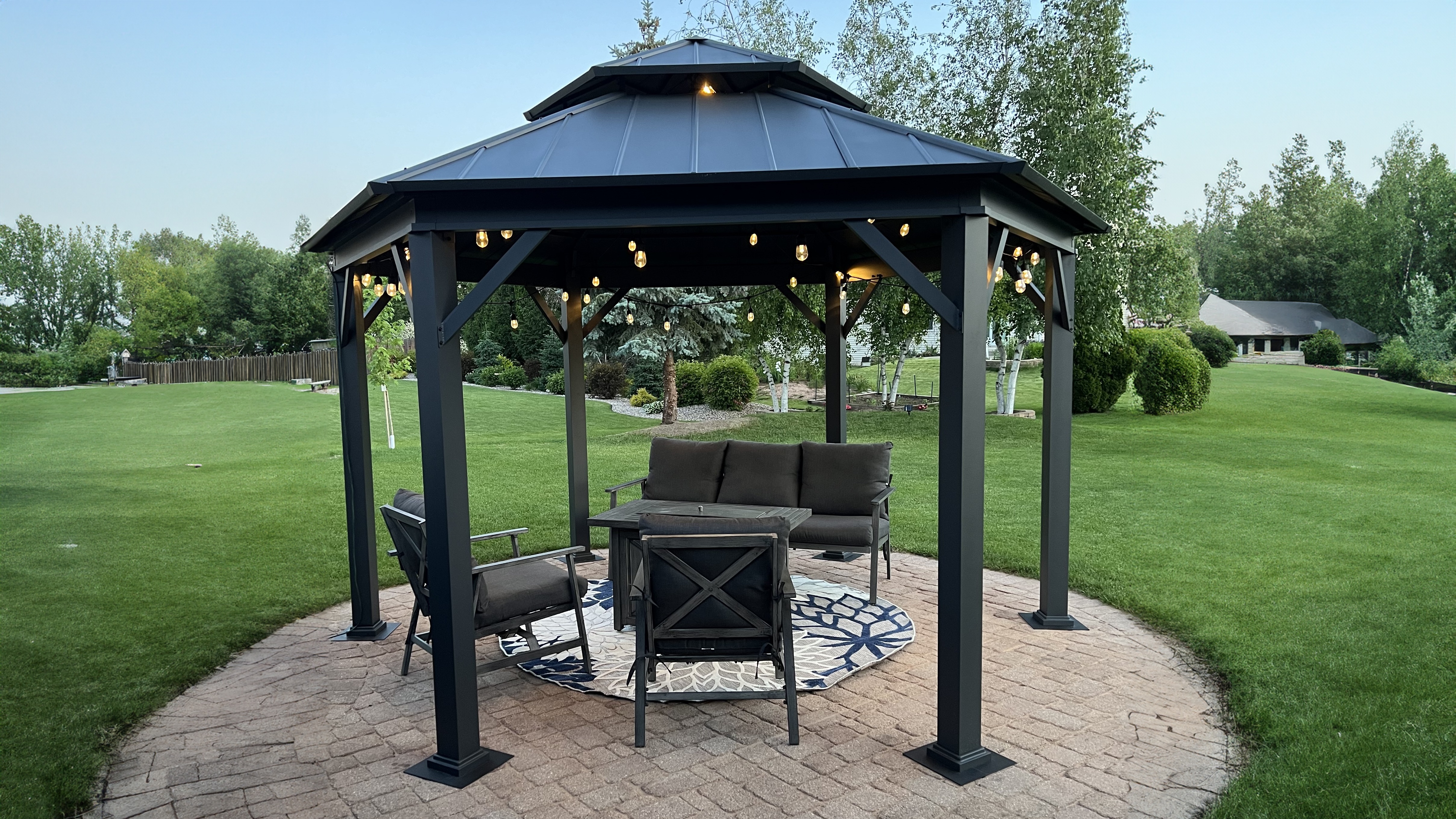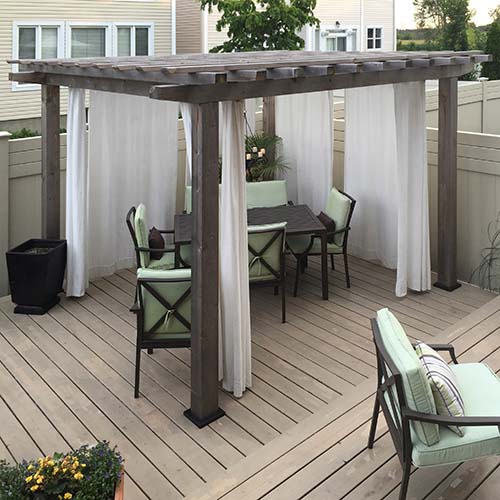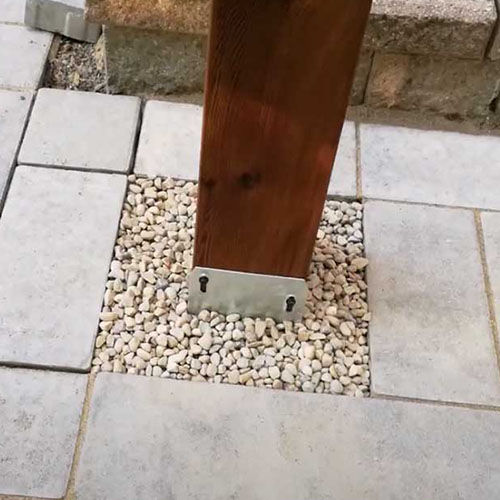How To Anchor Pergolas to the ground and more
Here are five reliable ways of how to anchor pergolas or gazebos (a kit or custom-made) to the ground, or over pavers.
You will learn the various methods of anchoring pergolas, including traditional and modern solutions, some requiring digging and others without. Then we will focus on the innovative multipurpose Deck Foot Anchor that offers a variety of cost and convenience benefits.
But first here is some background describing why these structures are so popular why knowing how to anchor them is on many peoples' minds.
Pergolas are popular outdoor structures that provide shade and enhance the aesthetic appeal of gardens and patios. Proper anchoring and support are crucial for their stability and longevity.
The Rise of Pergolas and Gazebos in Outdoor Living
In recent years, the allure of outdoor living spaces has captured the hearts of homeowners everywhere. Among the most popular additions to these spaces are pergolas and gazebos, which offer both aesthetic appeal and functional benefits. These structures provide shade, define spaces, and enhance the overall ambiance of a backyard, making them a staple in modern outdoor design.
Custom-Built vs. Kit Pergolas and Gazebos
When considering a pergola or gazebo, homeowners face the choice between custom-built structures using dimensional lumber and pre-fabricated kits made of wood or metal.
Custom-built pergolas and gazebos offer the advantage of tailored design. They can be constructed to fit any space, style, or specific requirement.
Using dimensional lumber allows for flexibility in design and material choice, enabling homeowners to match the structure with their home’s architecture.
However, this option often requires more labor, specialized skills, and a higher budget due to the cost of materials and the expertise needed for construction.
On the other hand, pergola and gazebo kits provide a straightforward and often more economical solution. These kits come with pre-cut materials and instructions, simplifying the assembly process.
They are available in various materials, including wood and metal, offering different aesthetic and maintenance options.
While kits may lack the customization of a bespoke build, they are typically easier and quicker to install, making them a popular choice for DIY enthusiasts.
But one thing all of these homeowners want to know is how to anchor pergolas reliably to the ground.
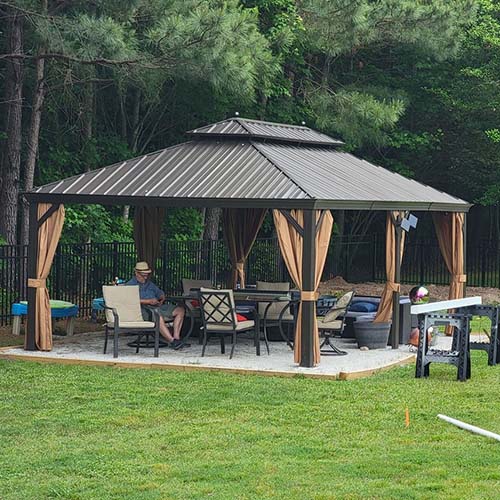
Five Ways how to anchor pergolas and gazebos
A critical aspect of installing pergolas and gazebos is deciding how to anchor and support them to the ground, over pavers or on any hard surface. The method chosen can impact the stability, longevity, and appearance of the structure. Let's dive in...
Concrete Footings
This traditional method involves digging holes, pouring concrete, and securing a metal post bracket to the concrete to anchor the posts.
While this provides a robust foundation, it requires significant labor and additional costs for materials like metal brackets and forms, such as bell-shaped or tubular forms.
This might be considered the Gold Standard in that it is tried test and true. This kind of footing can be designed to support massive loads, probably many times more than your gazebo.
This method demands precise planning and execution, as any errors can lead to misalignment.
Read this article on footings and foundations if you really like to learn more.
If you are interested in this method, check out the Bigfoot Forms.
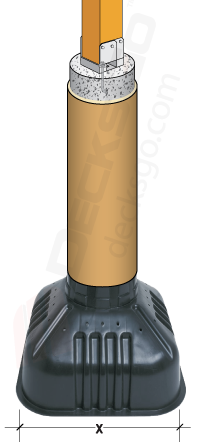
Advantages:
- Extremely stable and durable
- Suitable for various soil types
- Can support heavy structures
Disadvantages:
- Labor-intensive and time-consuming
- Requires additional materials (metal brackets, concrete forms)
- Permanent installation makes future changes difficult
- Precise placement is crucial to avoid misalignment
Tools/Skills Needed:
- Post-hole digger or auger
- Concrete mixing equipment
- Carpentry skills for form construction and post alignment
Helical Piles
These are screw-like foundations installed using hydraulic machinery. They vary in dimension and proportions. They offer a strong base but require precise placement due to the fixed nature of the post saddle bracket atop the pile.
Sometimes a pile can only go down in a specific spot because of obstacles. Misplacement can result in a crooked looking structure.
Helical piles are typically more expensive, costing at least $250 each, and necessitate professional installation, adding to the overall project cost.
Two good products in this category are from Goliath and American Ground Screw.
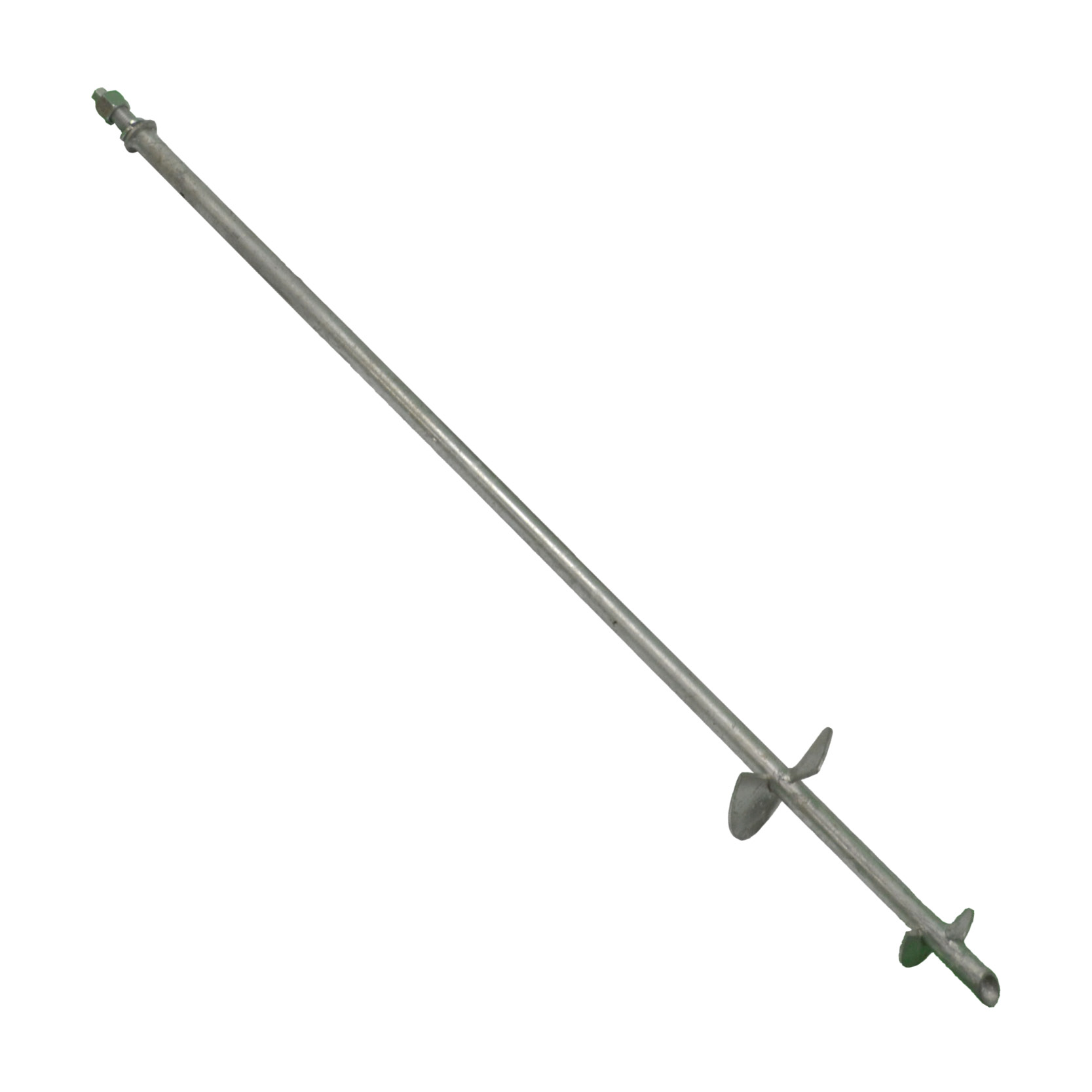
Advantages:
- Extremely strong and stable
- Minimal soil disturbance
- Quicker installation than concrete footings
Disadvantages:
- Expensive (typically $250+ per pile)
- Requires professional installation and specialized equipment
- Limited adjustability once installed
- Precise placement is crucial to avoid a crooked structure
Tools/Skills Needed:
- Hydraulic machinery (often requires professional operation)
- Precise surveying and layout skills
Ground Spikes
A simpler method, ground spikes are driven directly into the soil to support the posts. These are available in box stores everywhere.
While less expensive and easier to install, they may not provide the same stability as concrete footings or helical piles, especially in softer soils.
Cheaper models do not look very attractive and they are usually just painted so vulnerable to rust.
Peak Products makes a commonly available model.
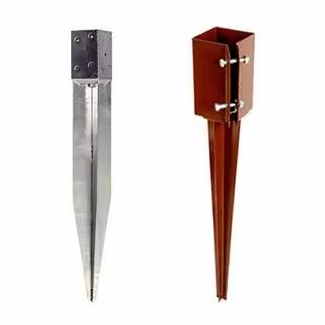
Advantages:
- Quick and easy installation
- Relatively inexpensive ($30-$40)
- Can be DIY-friendly
Disadvantages:
- Less stable than concrete or helical piles, especially in soft soils
- May not be suitable for larger structures
- Can be difficult to install in rocky soil
Tools/Skills Needed:
- Sledgehammer or post driver
- Basic DIY skills
Surface Mounting on Hard Surface
For installations on concrete, paver stones, or wood-framed decks, surface mounting is an option.
Products like the Titan Wood Post Anchor, OZCO Post Base Kit, and Simpson Strong-Tie Post Base offer solutions for securely attaching posts to these surfaces.
However, there are some exceptions with pavers where heavy structures or high wind is possible, many people wish to anchor to the ground by removing pavers or using ground screws/augers through openings in the pavers.
All the products mentioned are convenient and can support the weight of the pergola. But they differ in appearance, style finish and coating and price.
It will mostly come down to personal preference in the category of solutions.
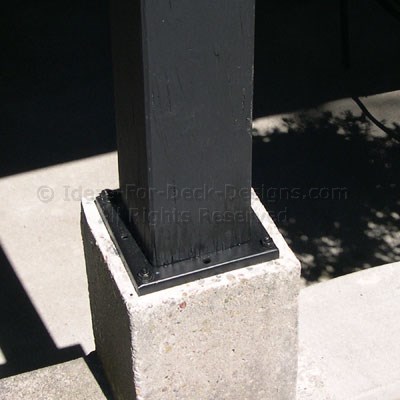
Advantages:
- No digging or ground disturbance required
- Can be easier to achieve precise alignment
- Suitable for areas where in-ground installation is challenging
Disadvantages:
- May not be as stable as in-ground methods for larger structures
- Requires a sturdy, level surface for mounting
- Can be more visually prominent than other methods
Tools/Skills Needed:
- Drill and appropriate bits
- Basic carpentry skills
- Knowledge of proper anchoring techniques for the specific surface
Deck Foot Anchor for anchoring pergolas - gazebos: An innovative Solution
This is a popular innovative solution for anchoring pergola posts to the ground or over pavers without the labor-intensive process of digging and pouring concrete.
The Deck Foot Anchor method involves installing anchors into the ground using a lightweight handheld electric impact wrench. It supports 4x4 and 6x6 dimensional lumber posts, as well as various hollow wood and metal posts from pergola kits. It allows for flexibility in gazebo or pergola post placement, accommodating installation errors and ensuring a square and perpendicular structure.
With a cost of approximately $75 to $80 per anchor, this method is cost-effective and accessible to individuals with average DIY skills.
Additionally, a flat load plate option permits use over existing paver stones, further enhancing its versatility.
Advantages:
- Quick and easy installation
- No digging or concrete pouring required
- Allows for adjustability in post placement
- Suitable for various post sizes and types (4x4, 6x6, hollow wood, metal)
- Can be installed over existing paver stones with a flat load plate option
Disadvantages:
- May not be as permanent as concrete footings
- Could be less suitable for extremely large or heavy structures
Tools/Skills Needed:
- Handheld electric impact wrench
- Basic DIY skills
which pergola anchor to choose?
Choosing the right method to anchor a pergola or gazebo depends on several factors, including budget, desired aesthetics, and the specific conditions of the installation site. Each method has its own set of advantages and disadvantages, influencing labor, cost, and the need for specialized tools or skills.
Concrete footings and helical pile anchors offer robust solutions but at a higher cost and complexity. Ground spikes and surface mounting provide simpler alternatives but may compromise on stability. The Deck Foot as pergola anchor merges as a balanced option, offering ease of installation, cost-effectiveness, and post adjustability, ground contact or over pavers, making it an attractive choice for many homeowners.
Ultimately, the decision of which pergola anchors to use will hinge on personal preferences, the specific requirements of the outdoor space, and the homeowner’s willingness to engage in the construction process. With the right choice, a pergola or gazebo can transform a backyard into a charming and functional outdoor retreat.
Home > Deck Foot Forum > How to Anchor Pergolas





















